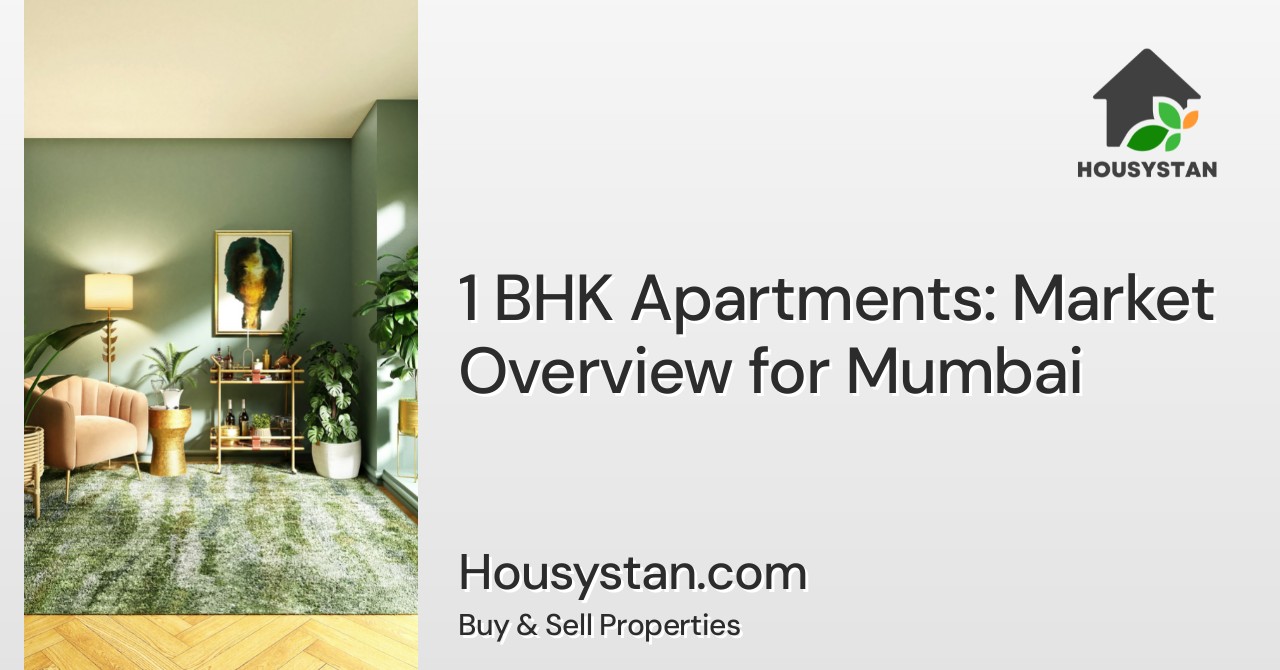1 BHK Apartments: Market Overview for Mumbai
Read latest blogs and articles from Housystan

The Information mentioned here was last updated on:
4/12/20251 BHK Apartments: Market Overview for Mumbai
Mumbai, the financial capital of India, remains a prime destination for individuals seeking compact and affordable urban living spaces. The demand for 1 BHK apartments in Mumbai has experienced a steady rise, driven by the city’s dynamic workforce, students, and young families. These single-bedroom units offer a perfect blend of convenience, affordability, and accessibility, making them a preferred option for first-time homebuyers and those relocating for career opportunities.
Strategically located neighborhoods like Andheri, Borivali, Powai, and Chembur have become hotspots for 1 BHK flats. These areas provide excellent connectivity to major business districts, educational institutions, and healthcare facilities. Proximity to railway stations, metro corridors, and expressways further enhances the appeal of these localities for daily commuters. Residents benefit from a vibrant lifestyle, with shopping centers, restaurants, and recreational zones within easy reach.
- Verified Tenants/Buyers
- Unlimited Property Listing
- Zero subscription/charges fee
In recent years, real estate developers have focused on optimizing the design and layout of 1 BHK apartments in Mumbai, ensuring efficient utilization of space without compromising on comfort. Modern amenities such as dedicated parking, security systems, fitness centers, and landscaped gardens are now commonly included, elevating the standard of living for occupants. Additionally, sustainable building practices and smart home features are being incorporated to meet the evolving preferences of urban dwellers.
From an investment perspective, 1 BHK properties in Mumbai provide strong rental yields and promising appreciation potential. The city’s robust employment market and ever-growing population ensure a consistent demand for compact housing units. Whether you are a professional looking for a convenient city base, a student seeking accommodation close to campus, or an investor exploring lucrative options, Mumbai’s 1 BHK apartment segment offers flexibility and value for money.
With property prices varying based on location, amenities, and builder reputation, buyers have a wide range of choices to suit different budgets. Thorough market research and consultation with reputed real estate agents can help identify the best deals and upcoming projects in Mumbai’s thriving 1 BHK apartment market.